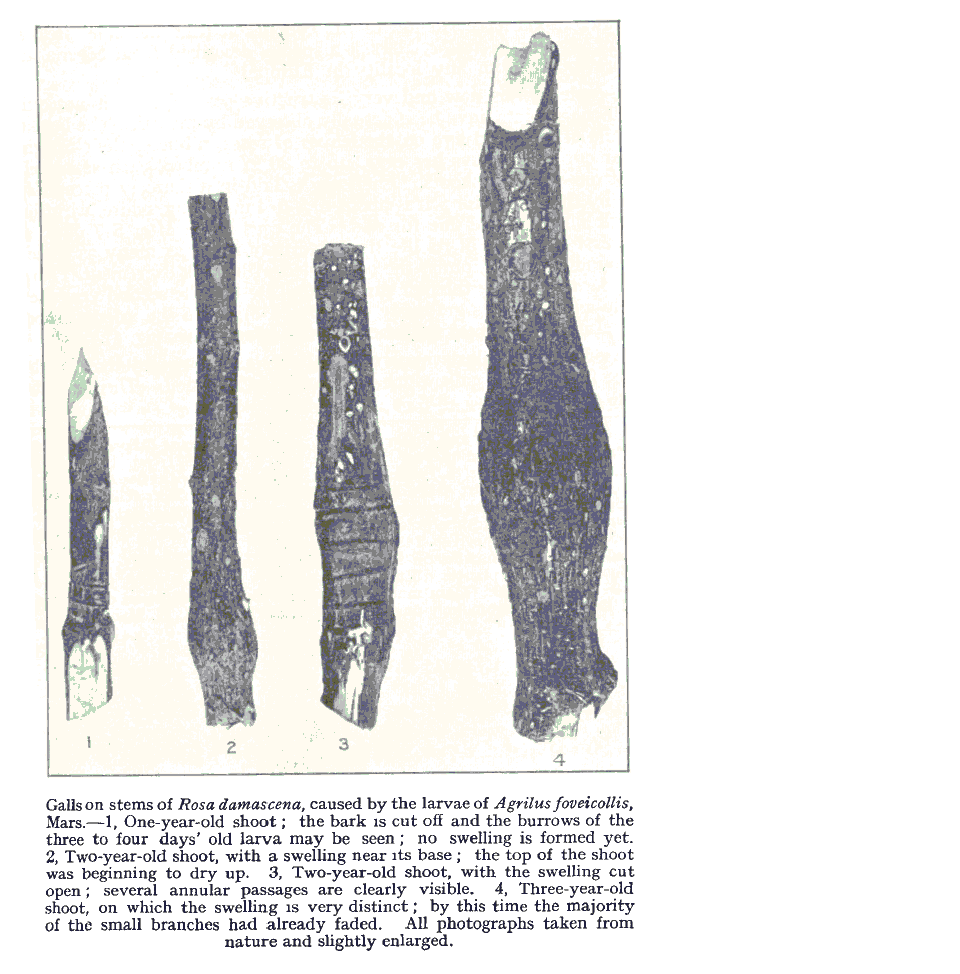Article contents
Agrilus Foveicollis, Mars., as a Cause of the Decay of the Culture of Roses in Bulgaria
Published online by Cambridge University Press: 10 July 2009
Extract
During the months of May and June 1921 I investigated the cause of the serious losses that had occurred among the rose-trees (especially Rosa damascena, Mill.) which are extensively grown in Bulgaria for making attar of roses. The conclusion arrived at is that the cause of the general decline in rose culture is inadequate  nourishment of the plants, owing to an insufficient amount of humus and nitrogen in the soil, aggravated by the entire neglect of manuring by the growers. But the immediate cause of the death of thousands of rose-bushes has proved to be certain galls that are to be found on the stems, reaching 2–3 cm. in length and sometimes twice as thick as the normal stem.
nourishment of the plants, owing to an insufficient amount of humus and nitrogen in the soil, aggravated by the entire neglect of manuring by the growers. But the immediate cause of the death of thousands of rose-bushes has proved to be certain galls that are to be found on the stems, reaching 2–3 cm. in length and sometimes twice as thick as the normal stem.
- Type
- Original Articles
- Information
- Copyright
- Copyright © Cambridge University Press 1921
References
* DrNikoloff, , Stefanoff, M. and Pouchkareff, N.: “The Culture of Roses in Bulgaria,” Revue d'Inst. des Recherches agronomiques en Bulgarie, i, nos. 5 & 6, 1921, pp. 11–14 (in Bulgarian). There is a figure of A. viridis, L., and its larva and cocoon, with descriptions taken from Richter von Binnenthal's book: “Die Rosenschadlinge aus dem Tierreiche,” Stuttgart (1903), as well as original figures of the burrows as observed by the authors in Bulgaria.Google Scholar
† Del Guercio, , “Intorno ad una deformazione del fusto della Rosa in Italia.”—Nuove Relaz. Staz. Entom. Agr. Firenze, pp. 143–146, pl. ix, figs. 1–2.Google Scholar
‡ Beauderie, J, “Les Croussins du Rosier.”—Hort. Nouv. Lyon, 1911.Google Scholar
§ “Les Zoocecidies des plantes d'Europe,” i, p. 542.Google Scholar
║ Coleopt, . Hefte, v, 1869. I am much indebted for the identification of my specimens to the Imperial Bureau of Entomology and to its Director, Dr. G. A. K. Marshall.Google Scholar
- 2
- Cited by




